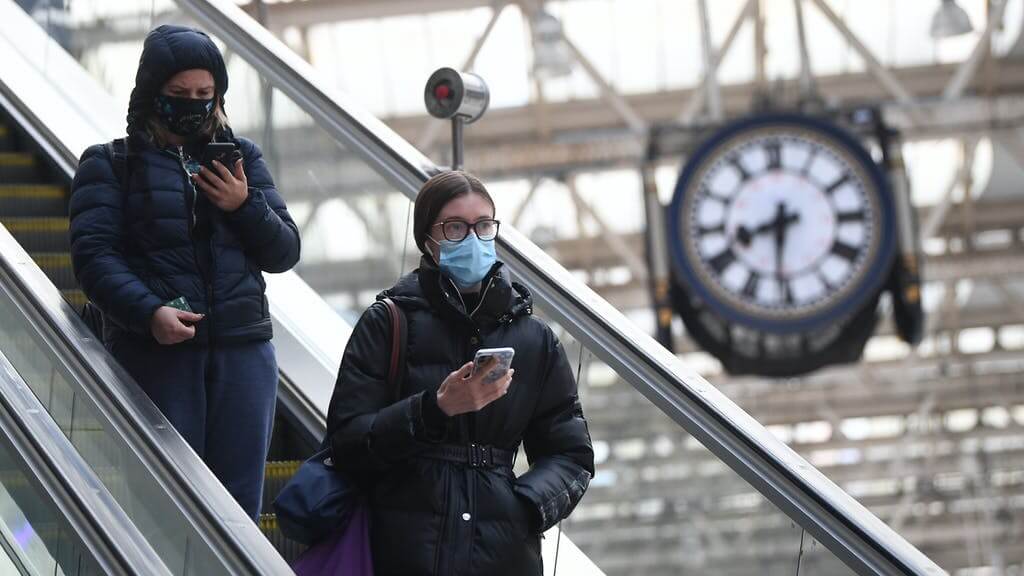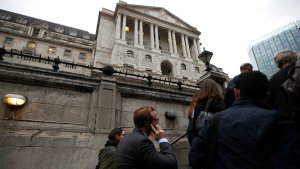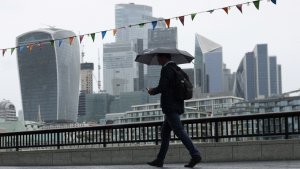The Office for National Statistics said the number of payrolled workers rose by 68,000 between January and February.
Number Of Workers On Payroll Up For Third Month, But Down 693,000 In Pandemic
The Office for National Statistics said the number of payrolled workers rose by 68,000 between January and February.

The number of workers on UK payrolls increased for the third month in a row in February but has fallen by nearly 700,000 since the start of the pandemic, according to official figures.
The Office for National Statistics (ONS) said the number of payrolled workers rose by 68,000 (0.2%) between January and February.
Overall there were 693,000 fewer workers on payrolls than in February 2020, with more than half – 368,000 jobs – lost in the hospitality sector as lockdowns and restrictions hammered the industry.
The ONS added that 123,000 payroll jobs were also lost in the hard-hit retail sector while more than 60% of the total fall over the past year was for those aged under 25 in a sign of the toll taken by the crisis on young workers.
Our latest labour market statistics have been published for November 2020 to January 2021 https://t.co/UfcMR3zECL pic.twitter.com/ZByf8x8scP
— Office for National Statistics (ONS) (@ONS) March 23, 2021
The latest figures show the rate of unemployment stood at 5% between November and January, down from 5.1% in the previous three months.
Sam Beckett, ONS head of economic statistics, said: “After yet another monthly increase, there were almost 200,000 more employees on payroll in February than three months earlier, although that is still nearly 700,000 down from the start of the pandemic.
“Of the decrease since then, almost two-thirds has been among the under-25s, over half has been in hospitality and almost a third has been in London.”
Overall, unemployment stood at 1.7 million between November and January, up 360,000 over the year, the ONS said.
The figures show a slight improvement since the start of the pandemic, with 601,000 vacancies between December and February.
This is 26.8% lower than a year earlier but the decline has eased steadily from a near-60% drop last summer, though the ONS said the rate of improvement has slowed in recent months.
Official figures earlier this month showed the economy contracted by 2.9% in January as the lockdown took its toll, but this was less than feared and a far cry from the double-digit fall of last April at the height of the first wave.
Chancellor Rishi Sunak extended furlough as part of extra Covid-19 support measures announced in the Budget at the start of March, which the Government hopes will contribute to a lower-than-feared rise in unemployment in the near term.
The Office for Budget Responsibility (OBR) recently revised down its forecasts for unemployment to peak at 6.5% by the end of the year – down from previous estimates made in November of 7.5%.
This will mean 340,000 fewer people out of work than previously thought thanks largely to the decision to extend furlough until September.
Chancellor Rishi Sunak said: “Coronavirus has caused one of the largest labour market shocks this country has ever faced, which is why protecting, supporting and creating jobs has been my focus throughout this crisis.
“We have taken decisive action with a £352 billion package of support.
“The continued success of the vaccine rollout provides us with hope for the future and, through our Plan for Jobs, we will continue to support people throughout the months to come.”
The ONS also said growth in average pay excluding bonuses rose to 4.2% in the three months to January from 4.1% in the previous quarter, but stressed that, with a high proportion of jobs axed being lower-paid roles, the underlying increase is likely to be around 2.5%.
Thanks for signing up to Minutehack alerts.
Brilliant editorials heading your way soon.
Okay, Thanks!

